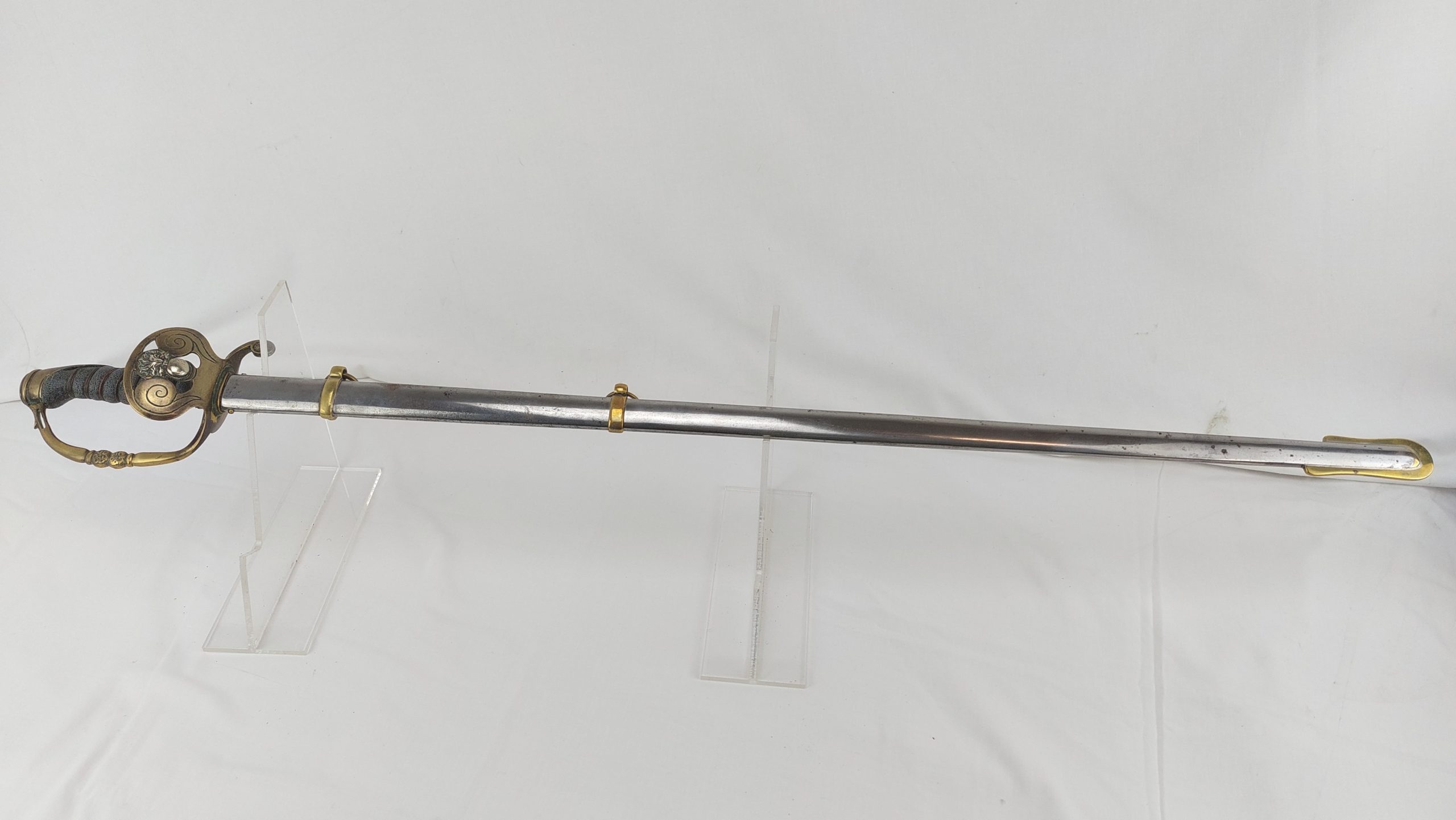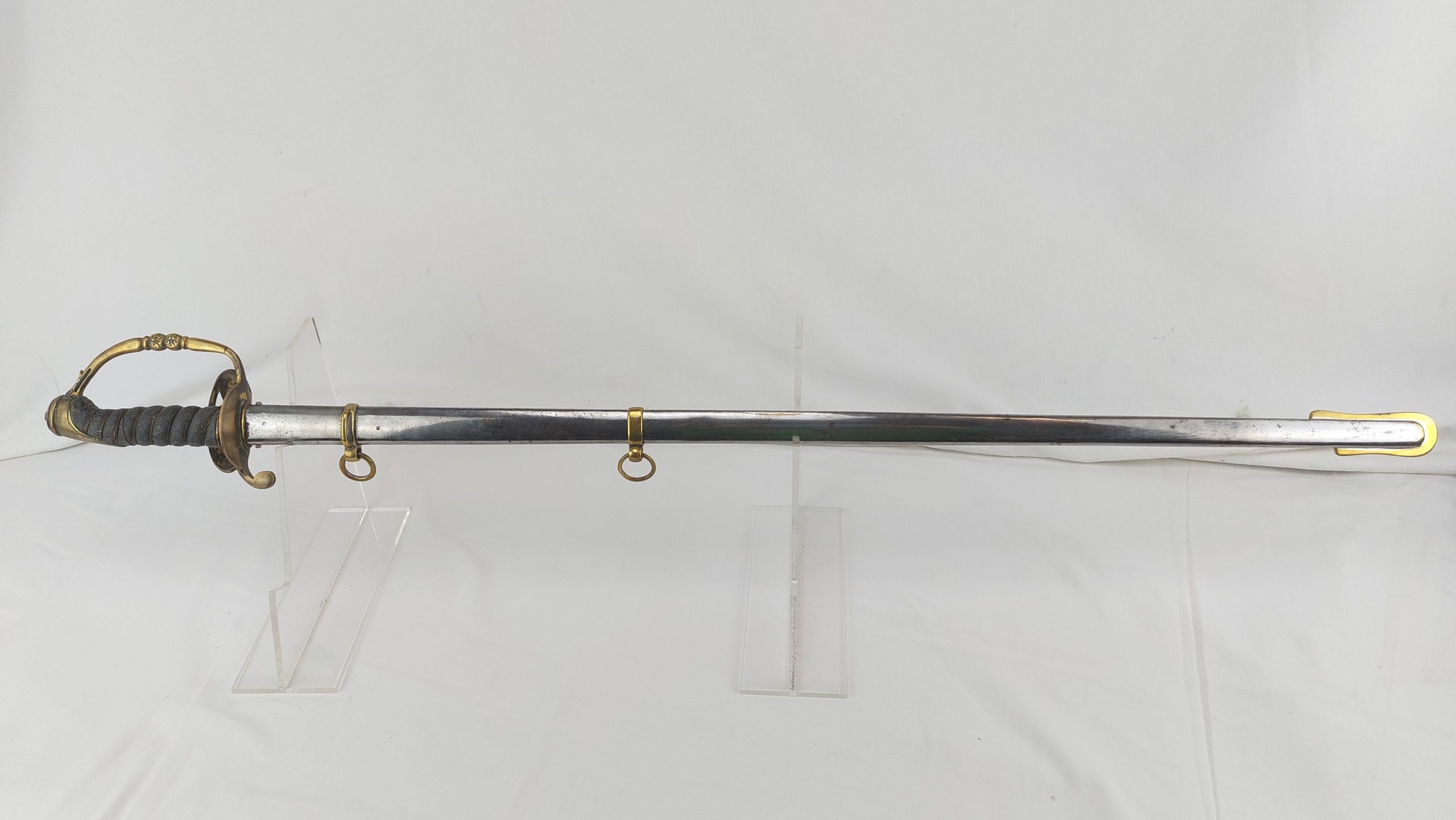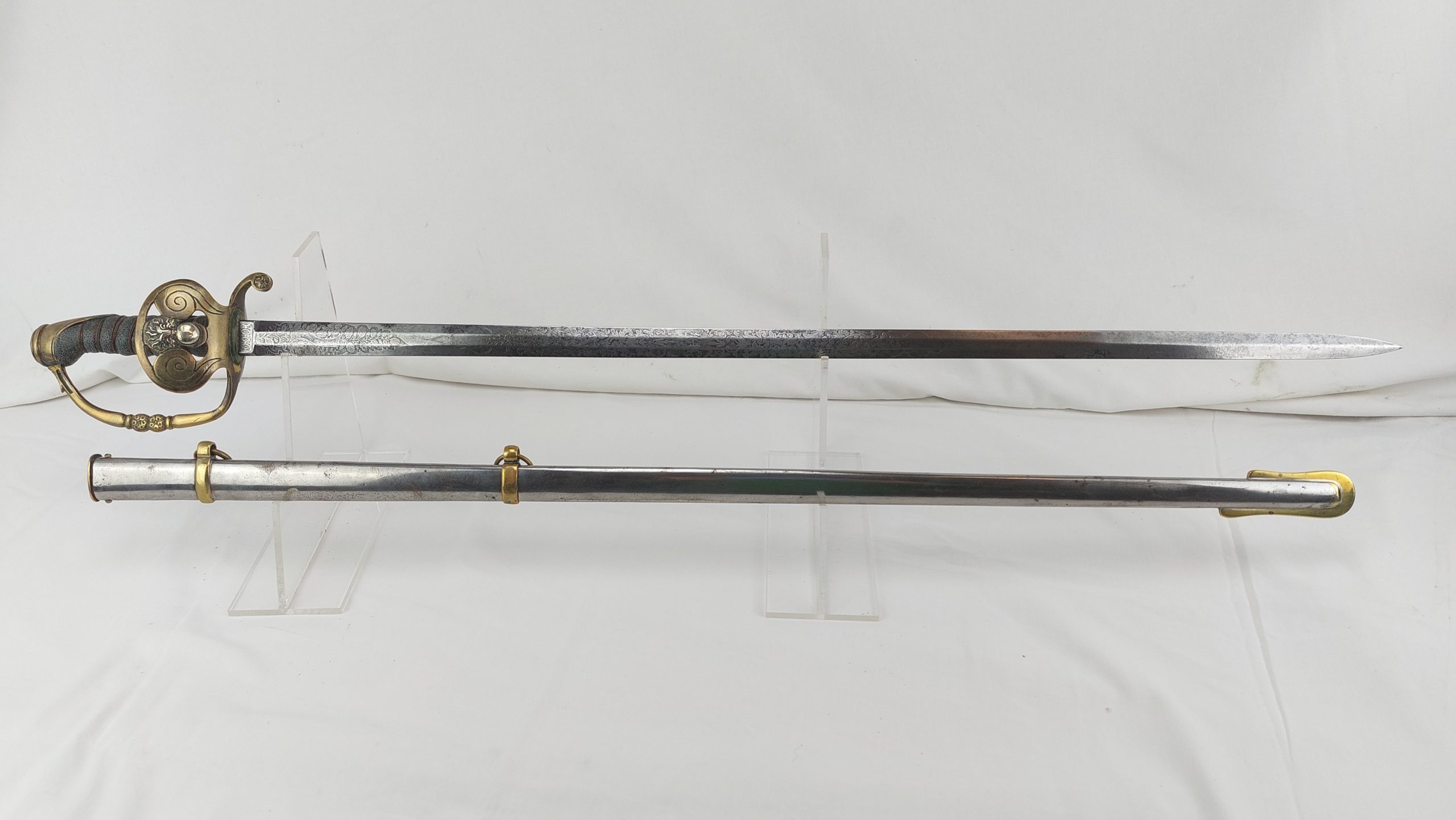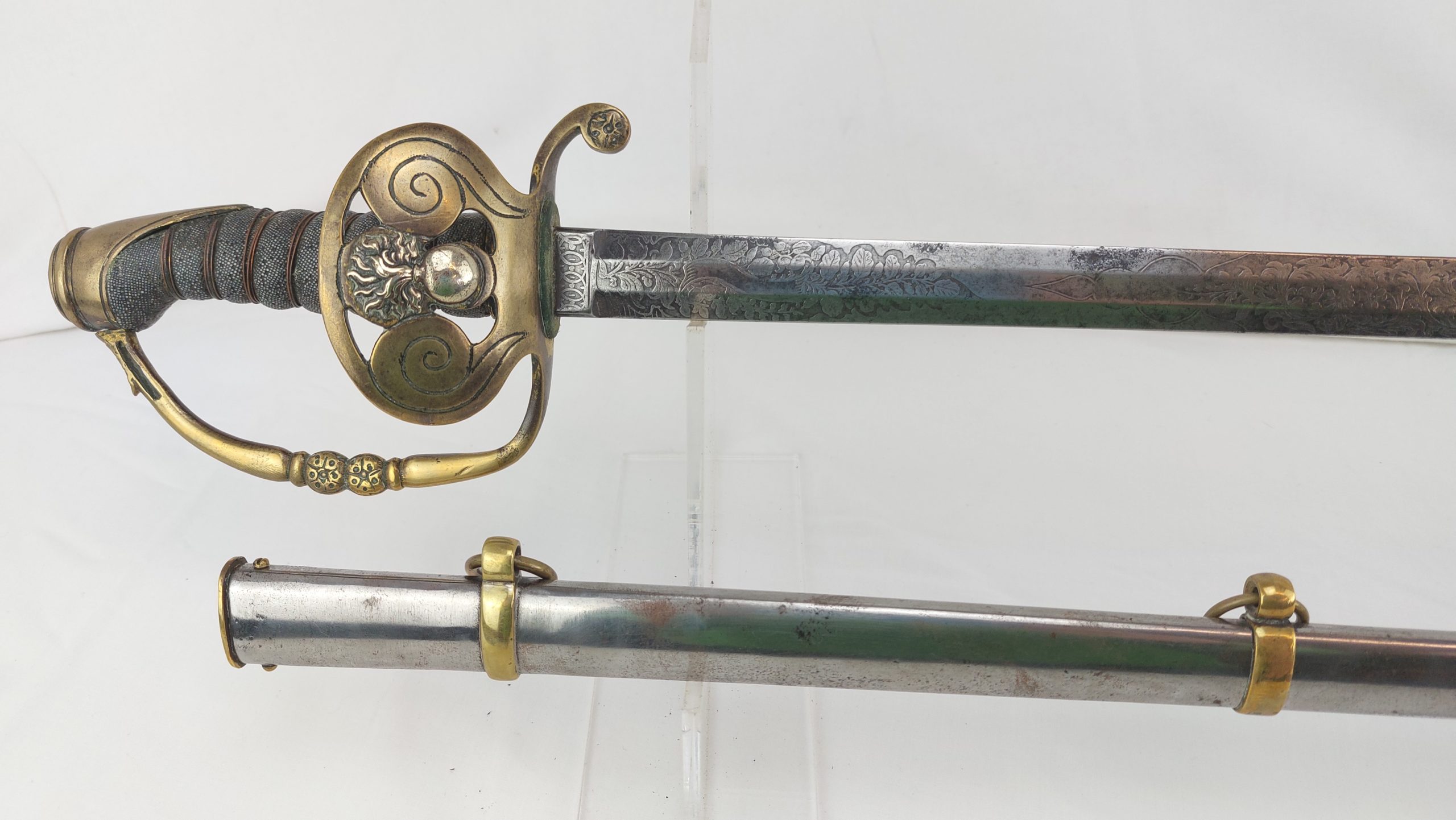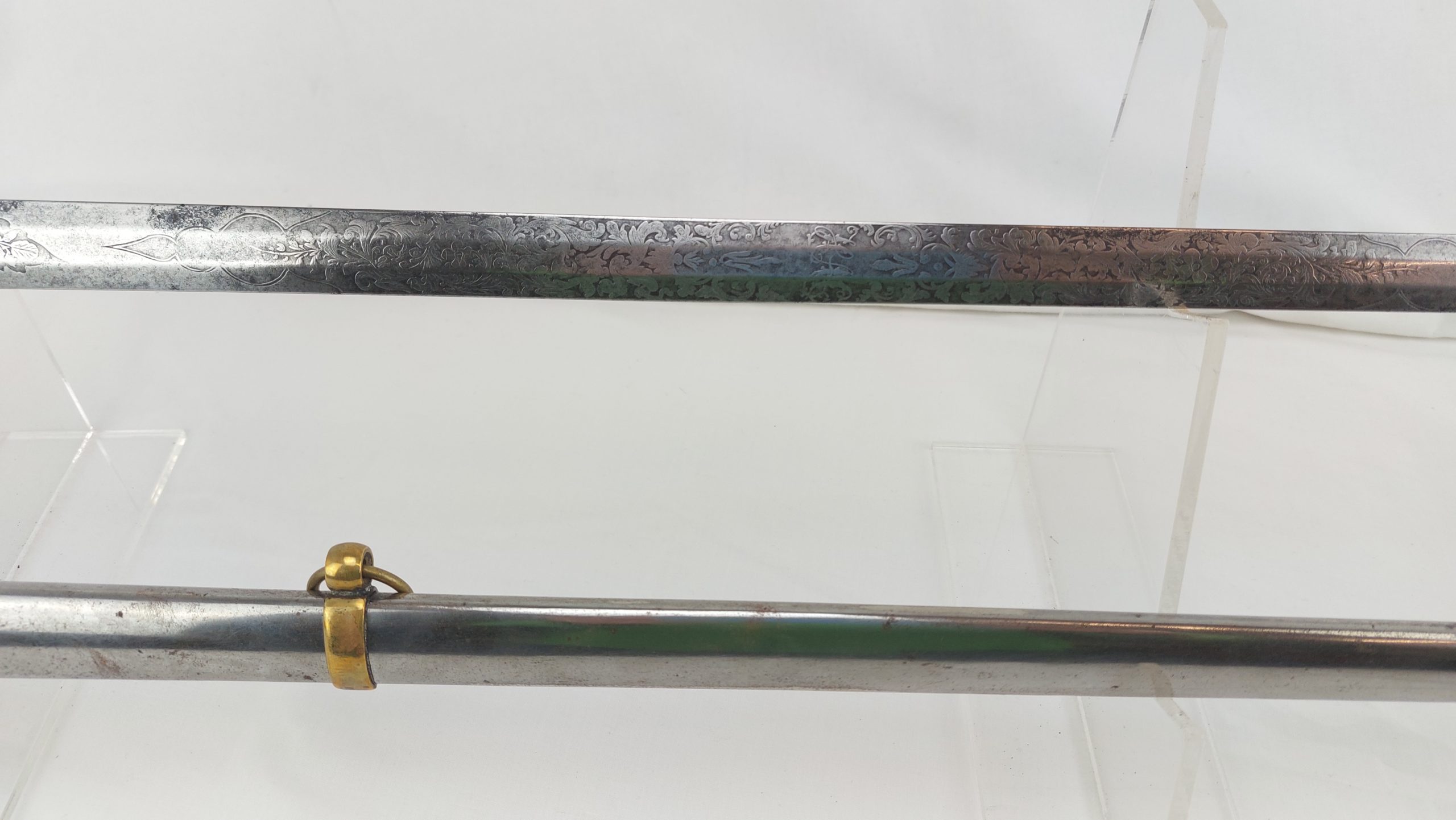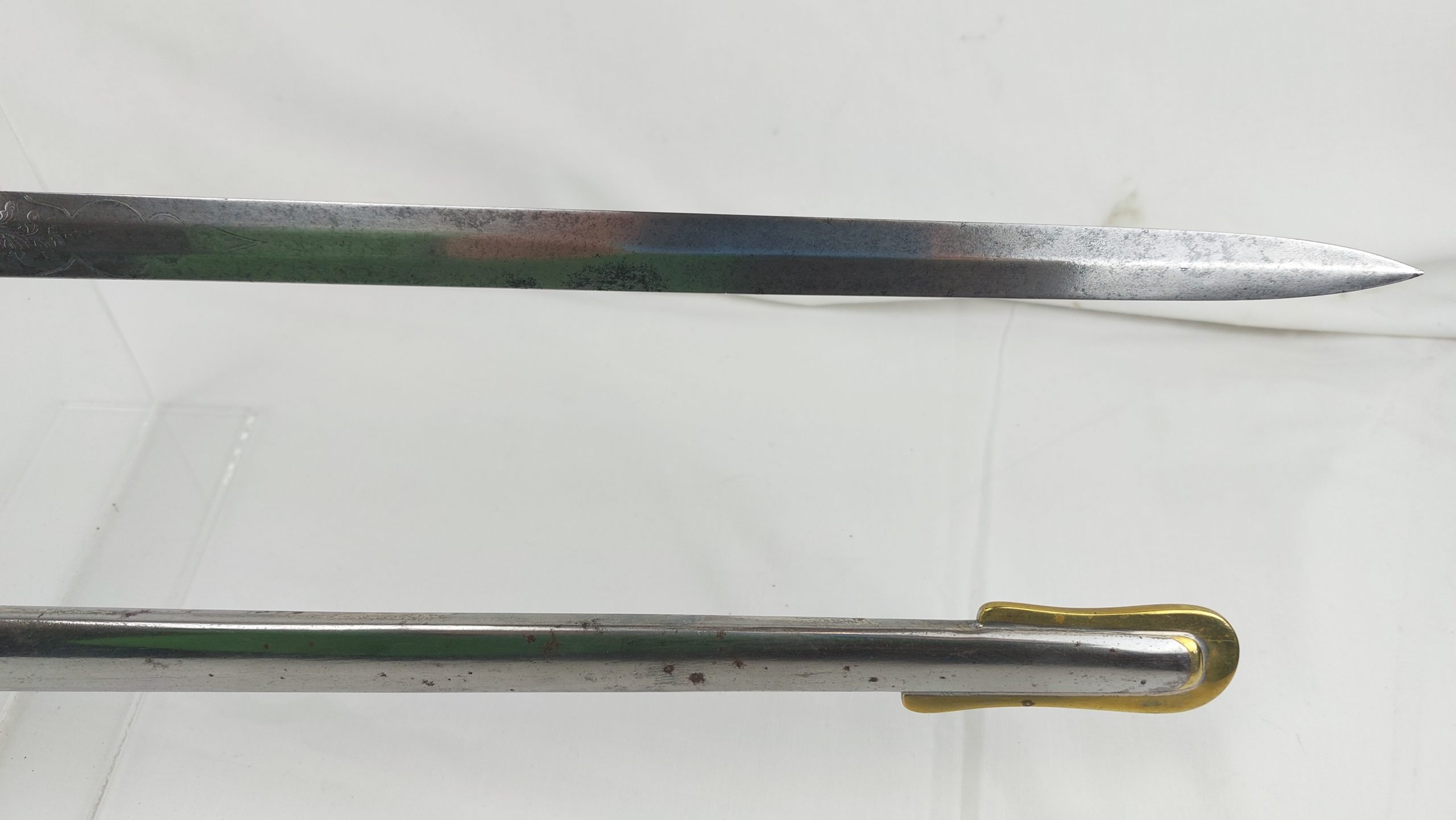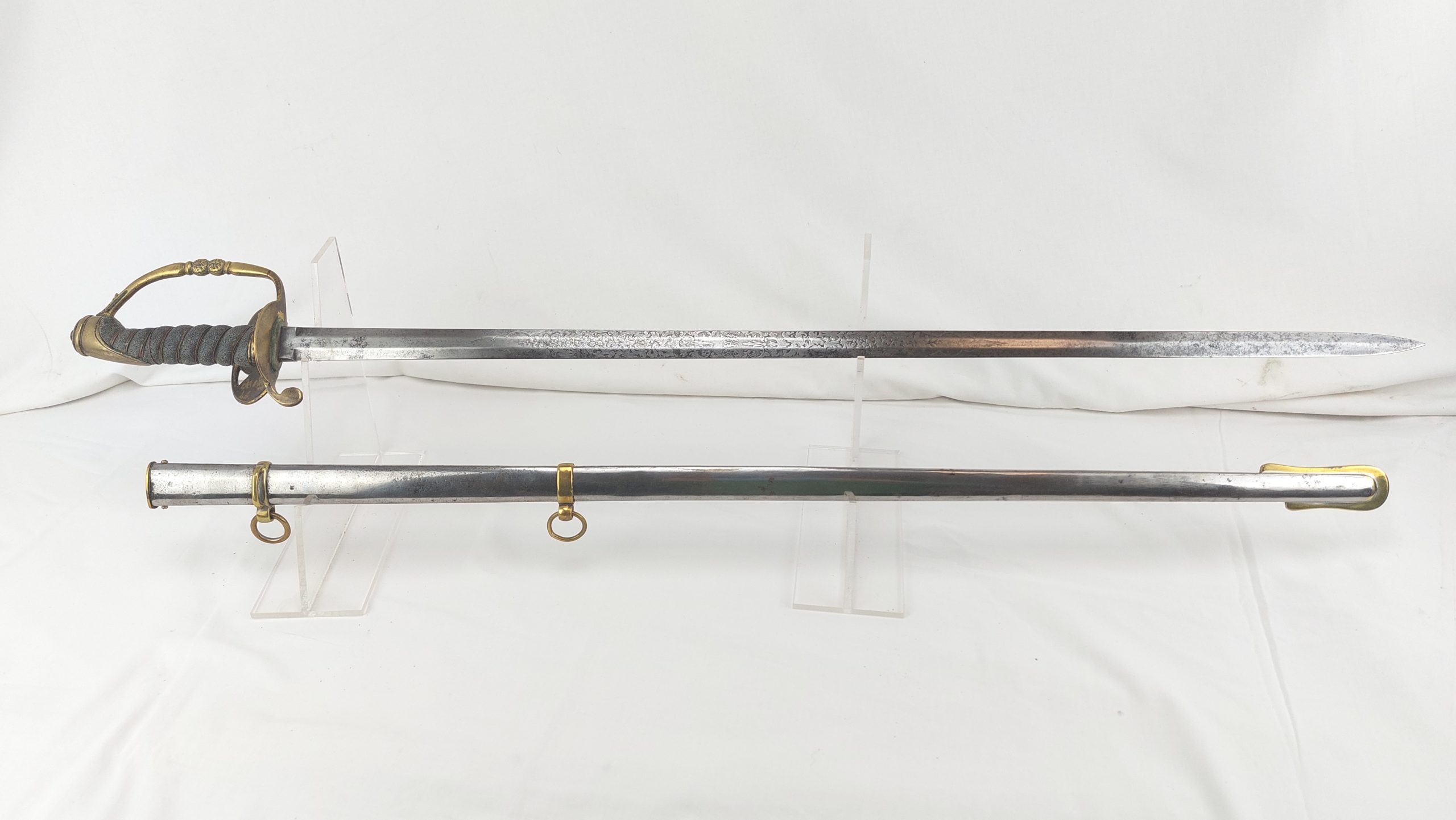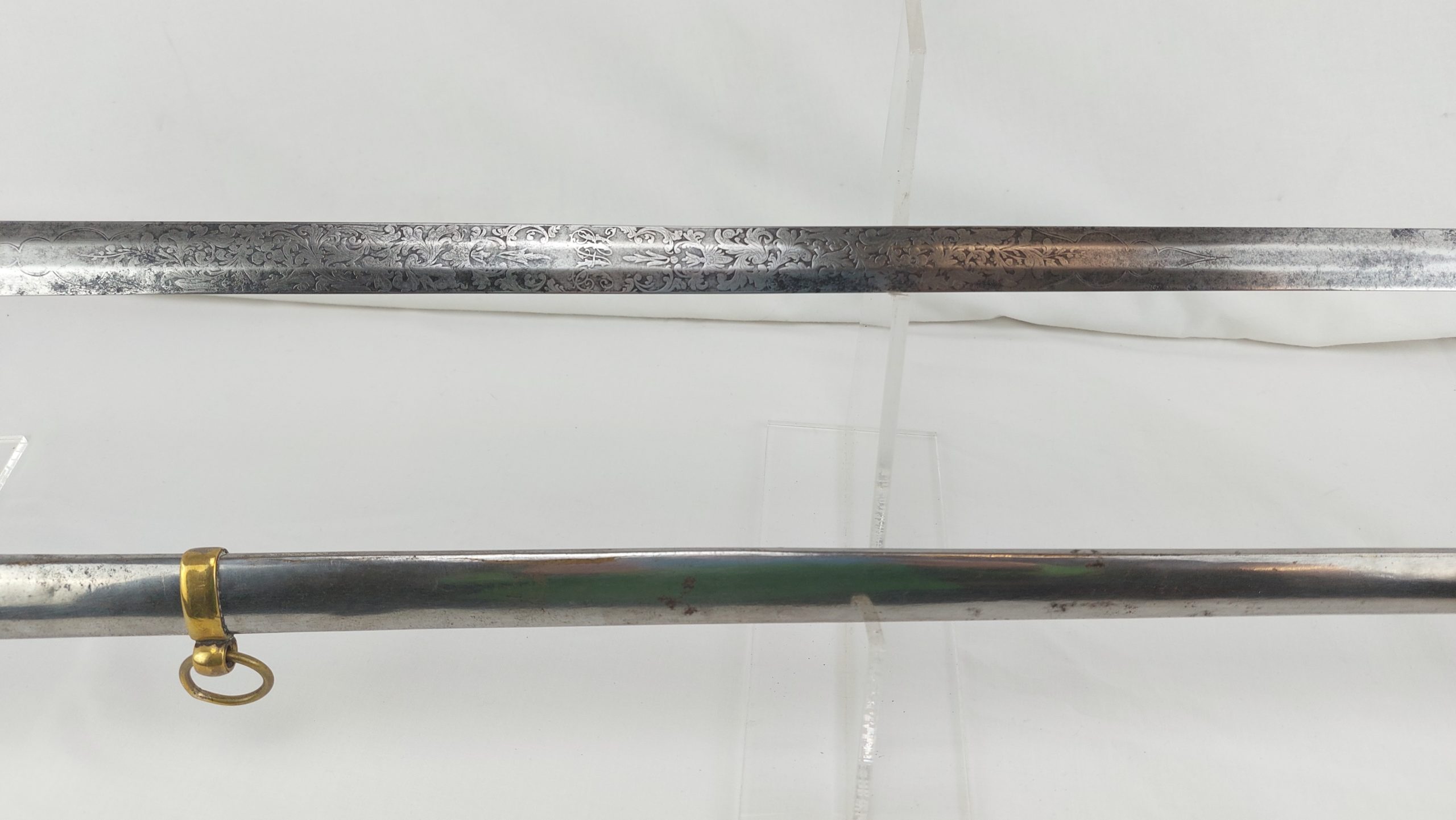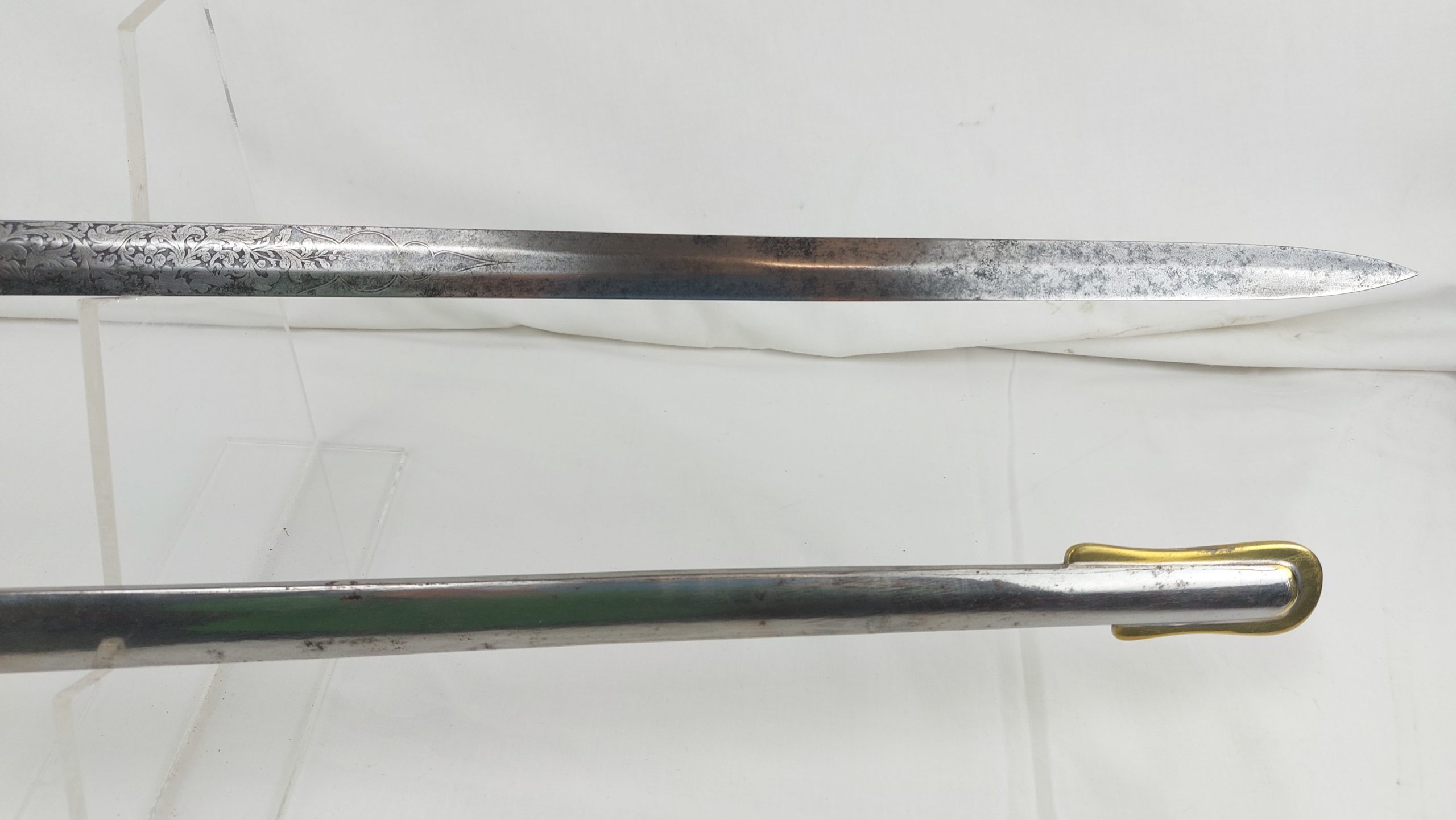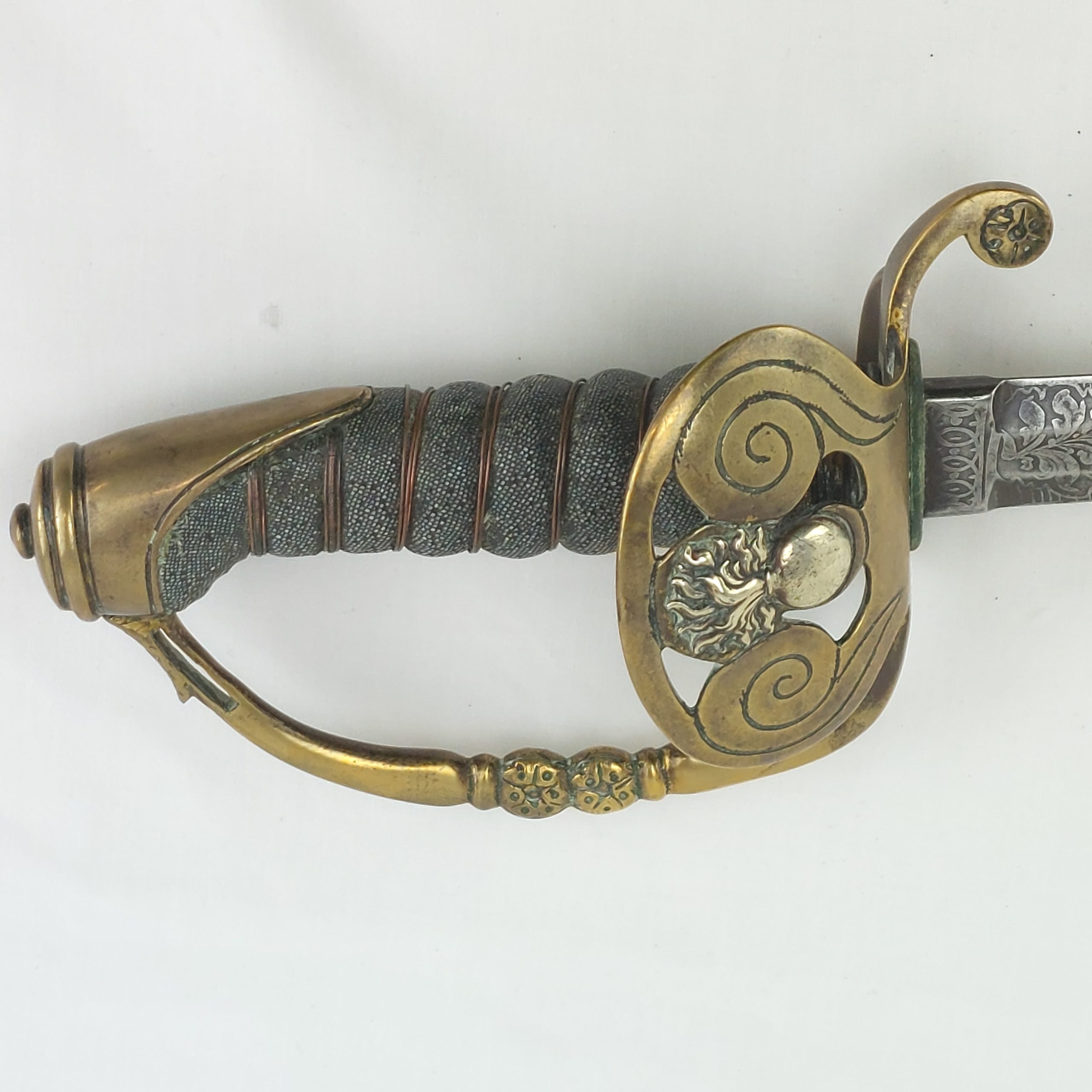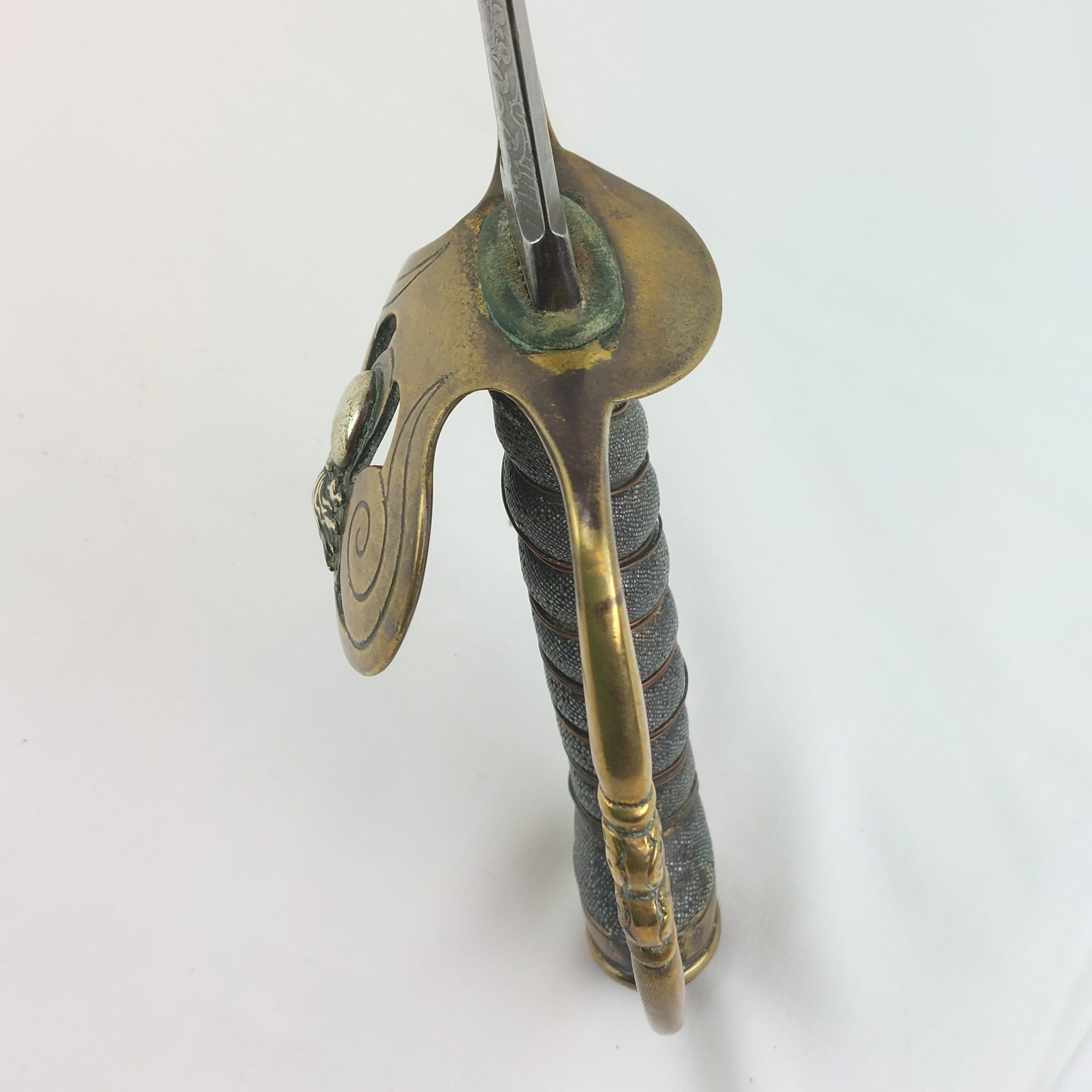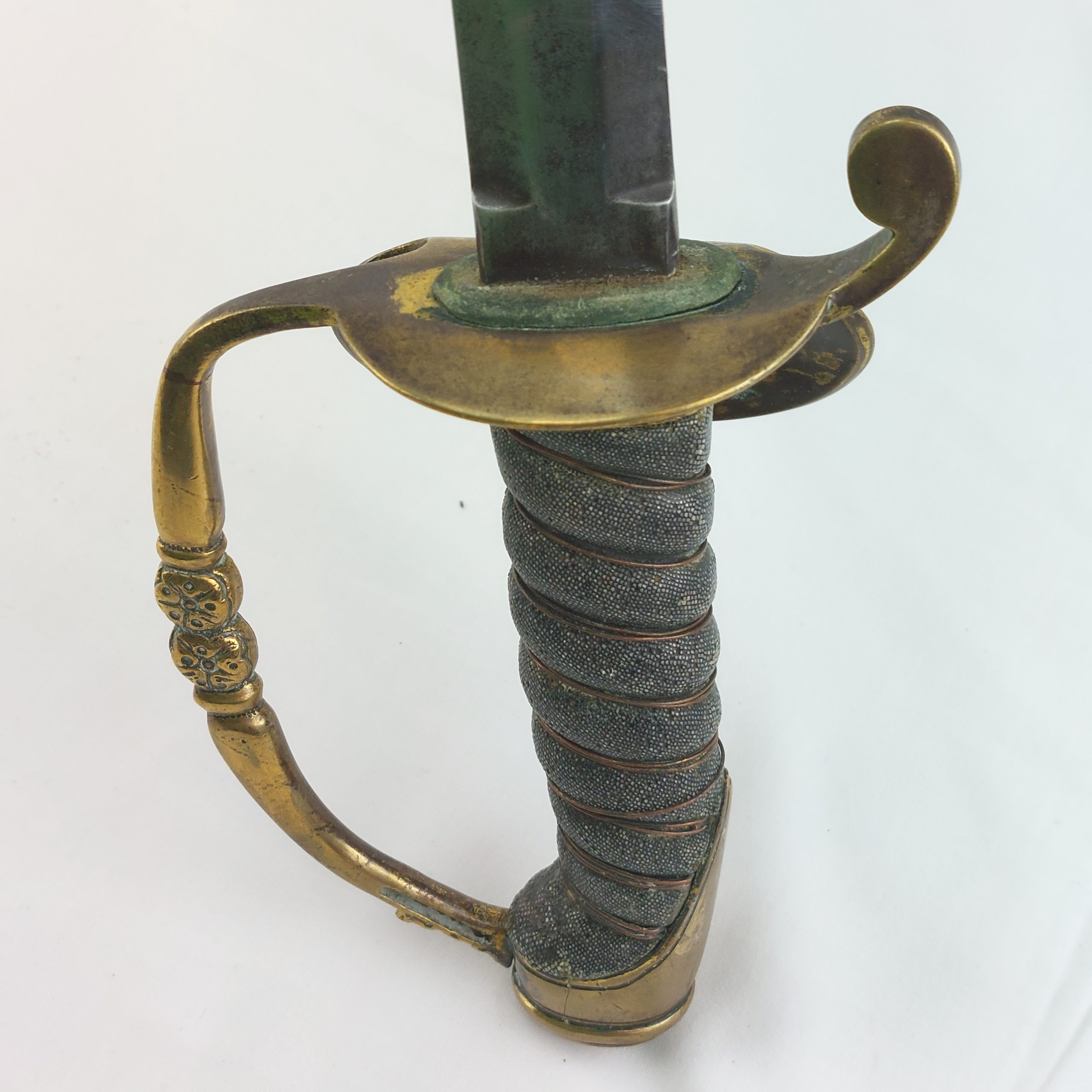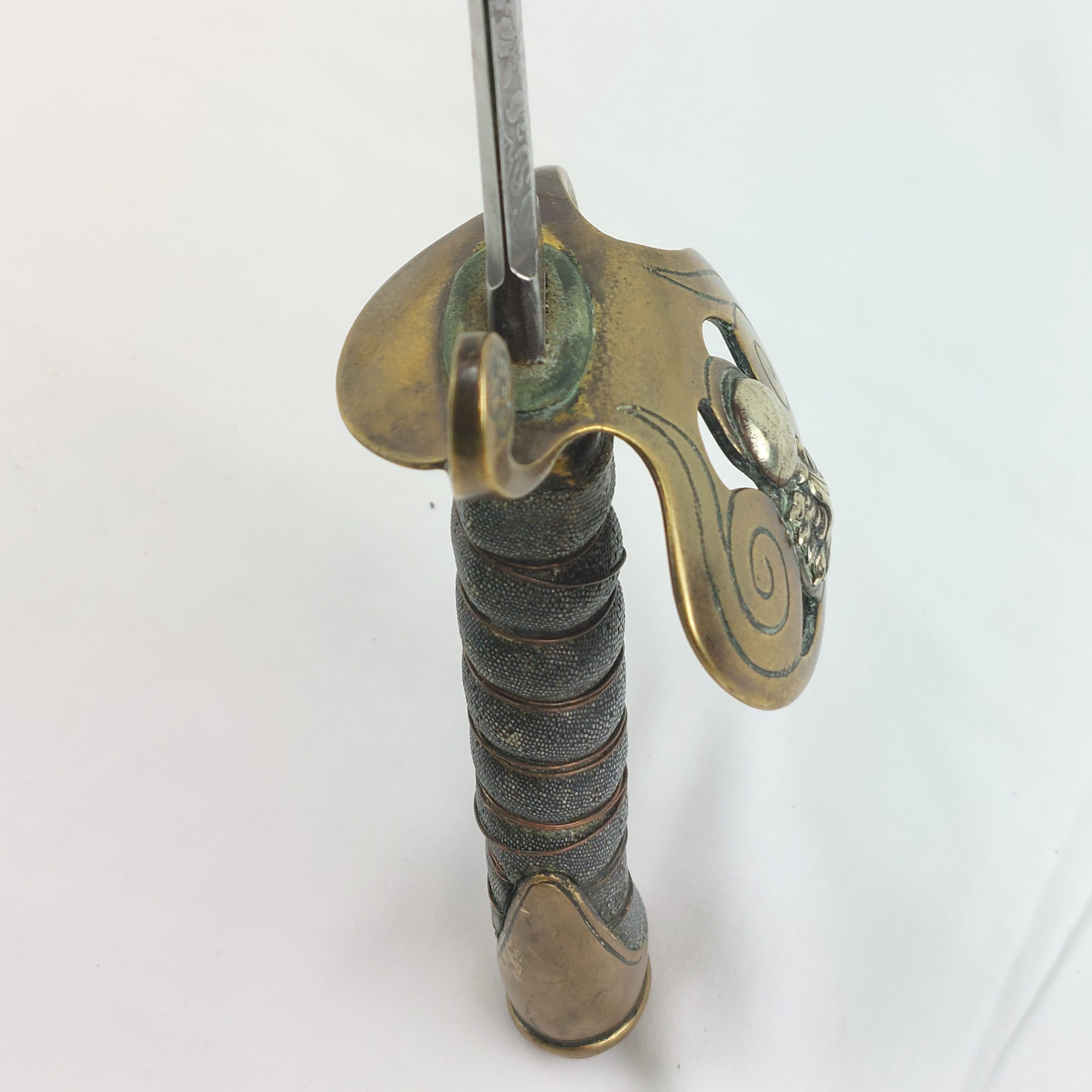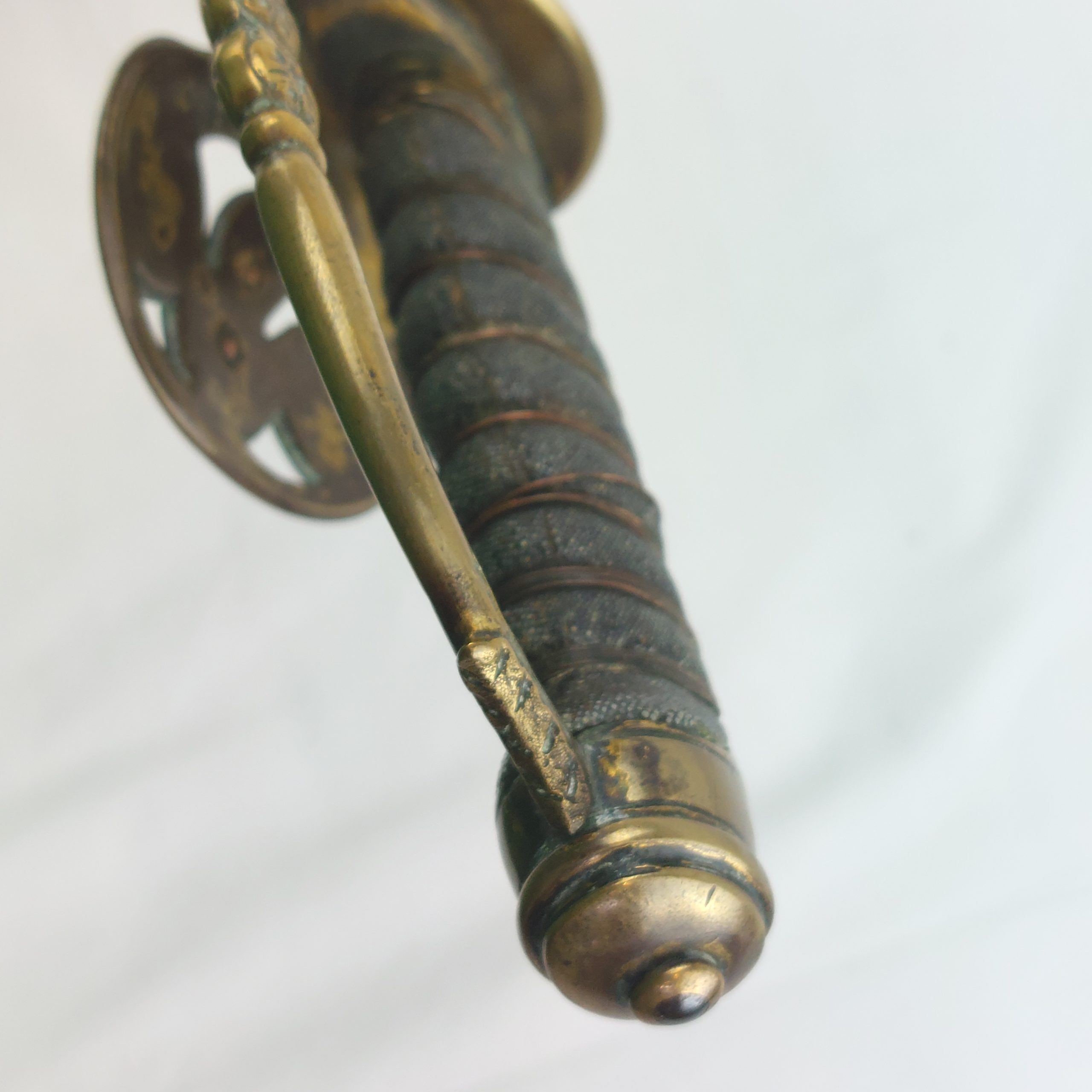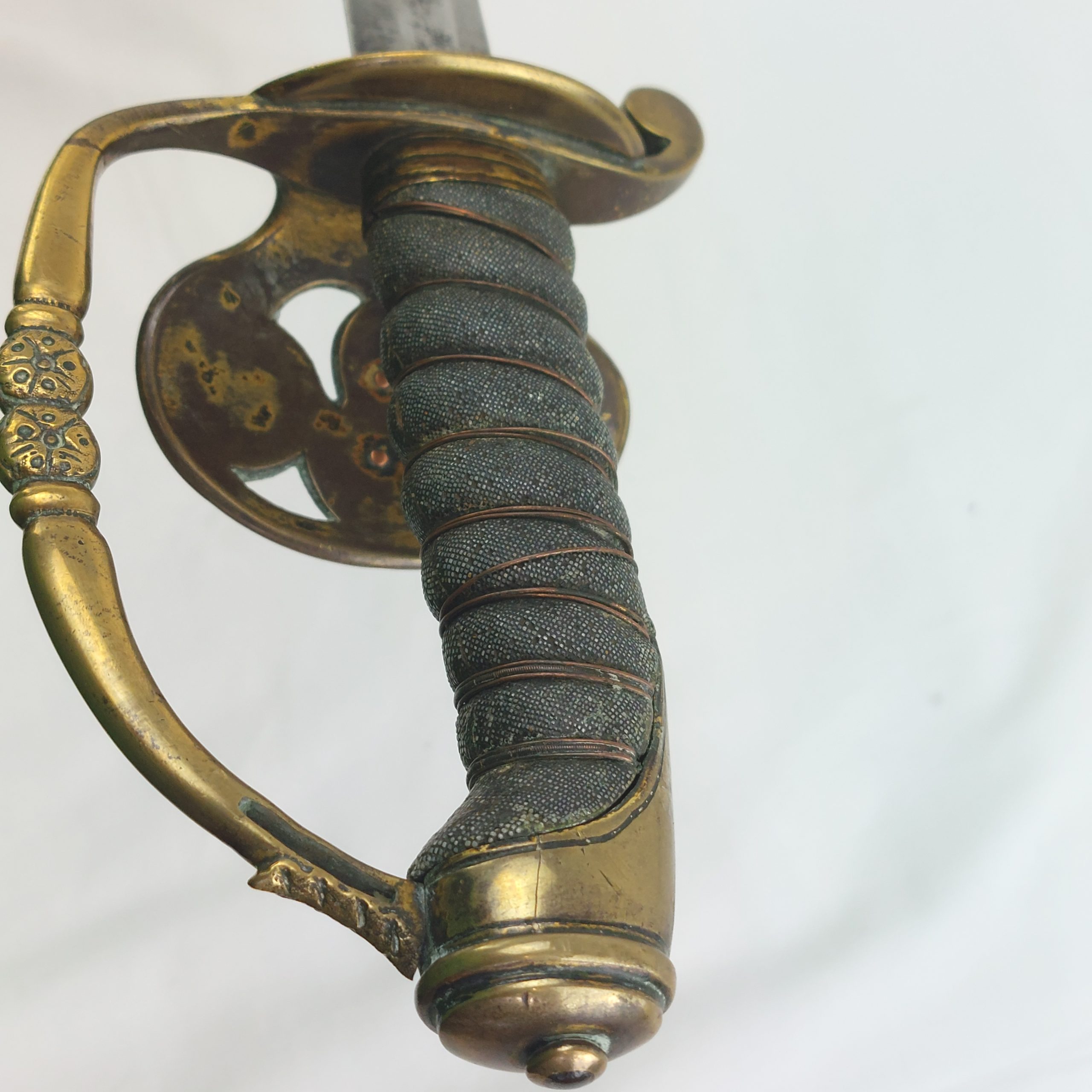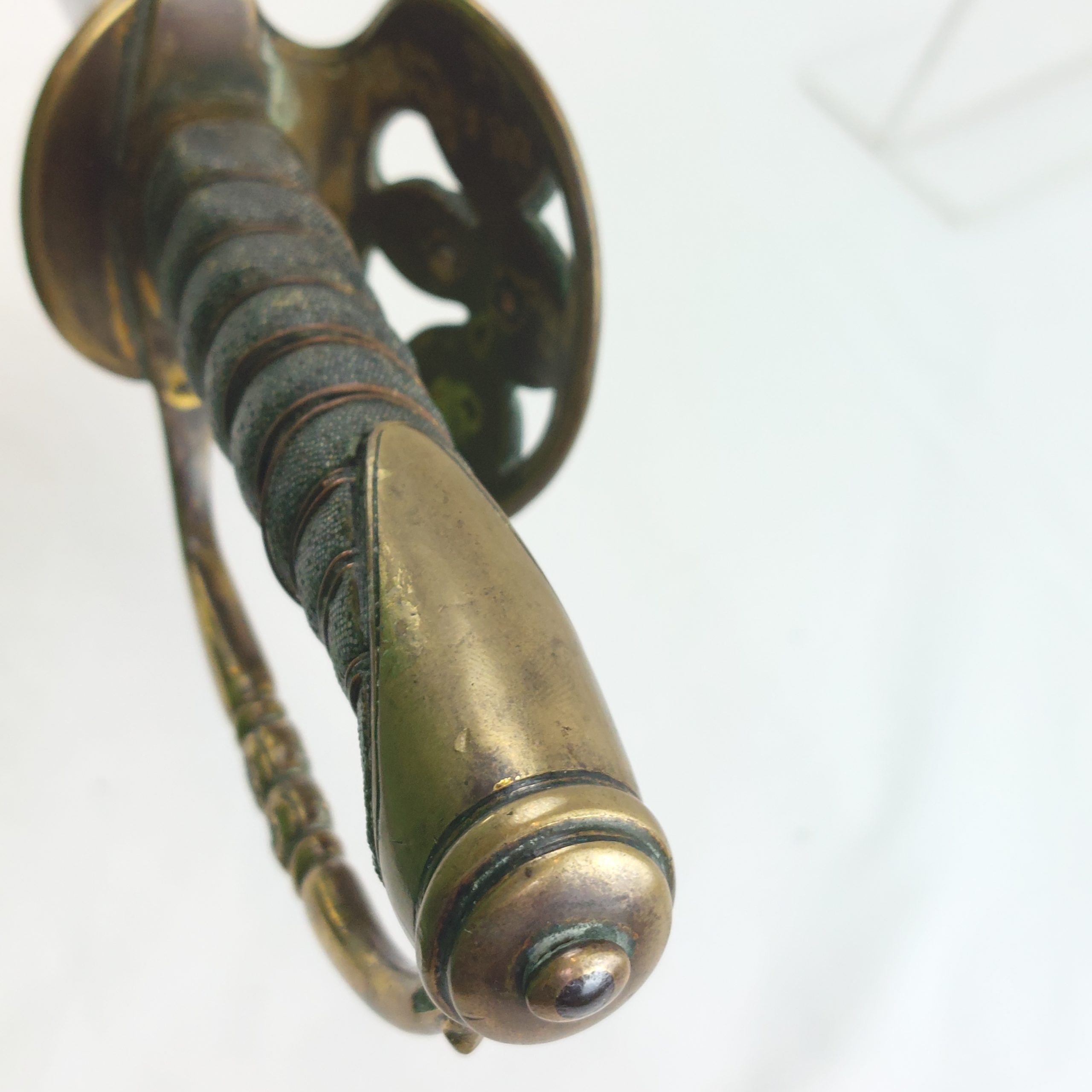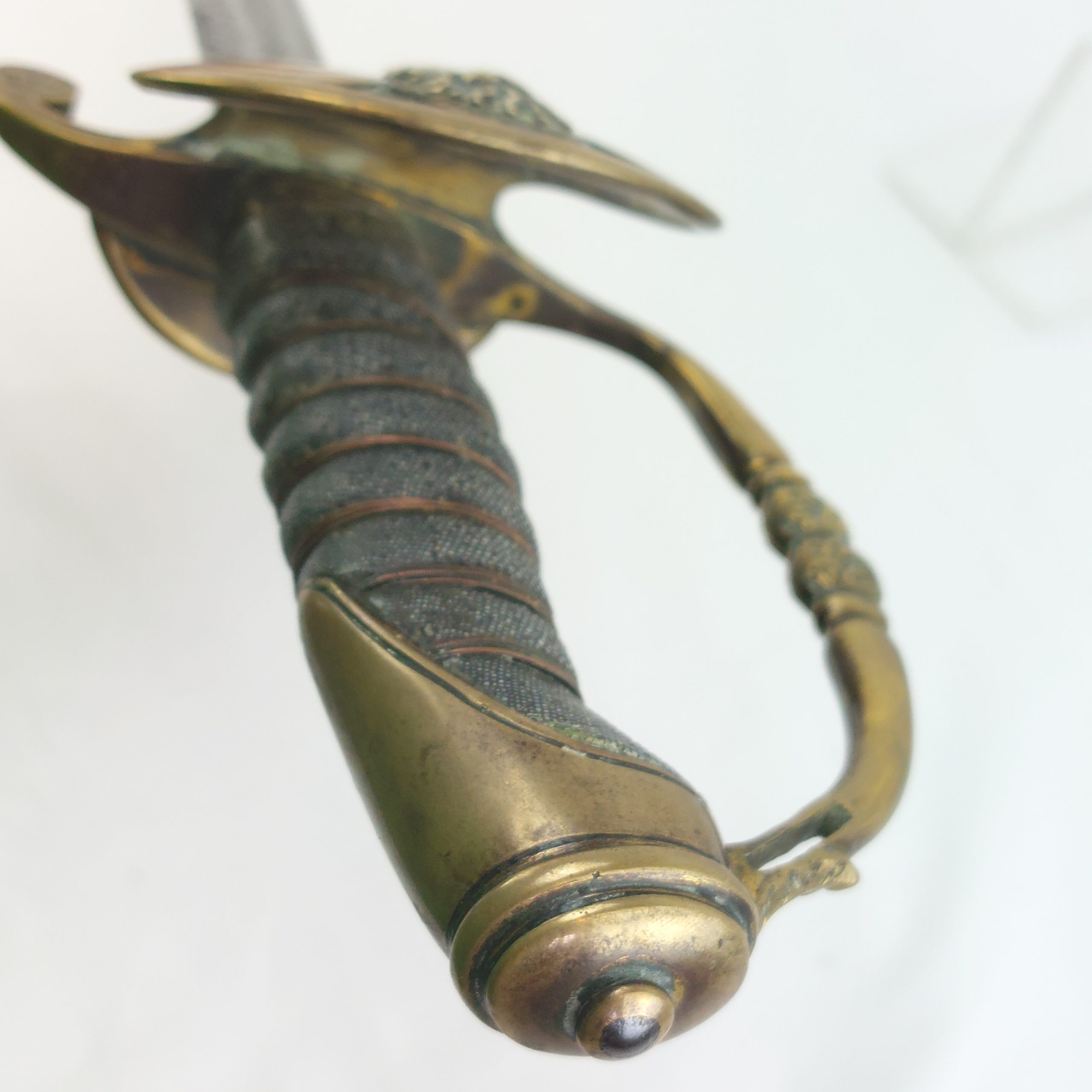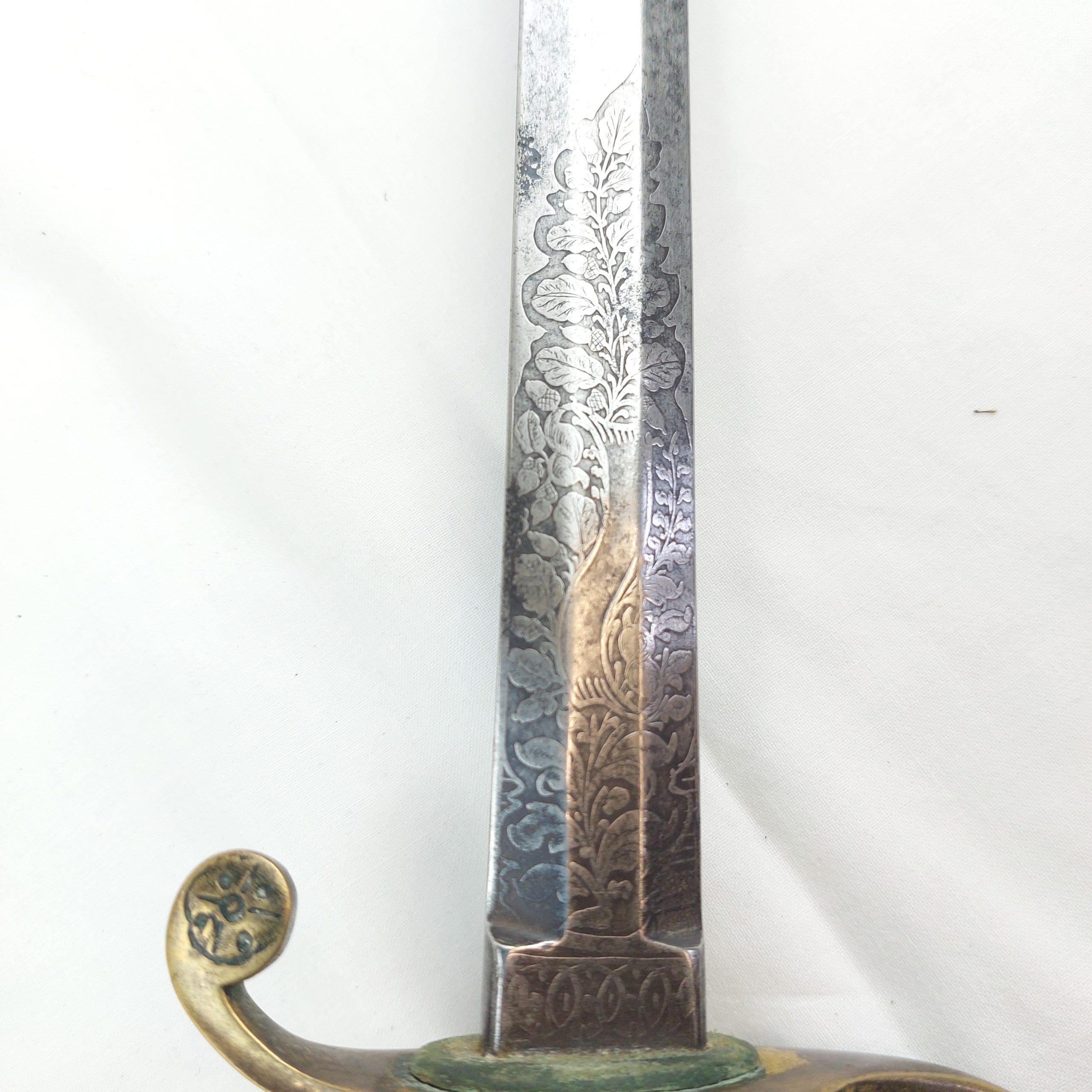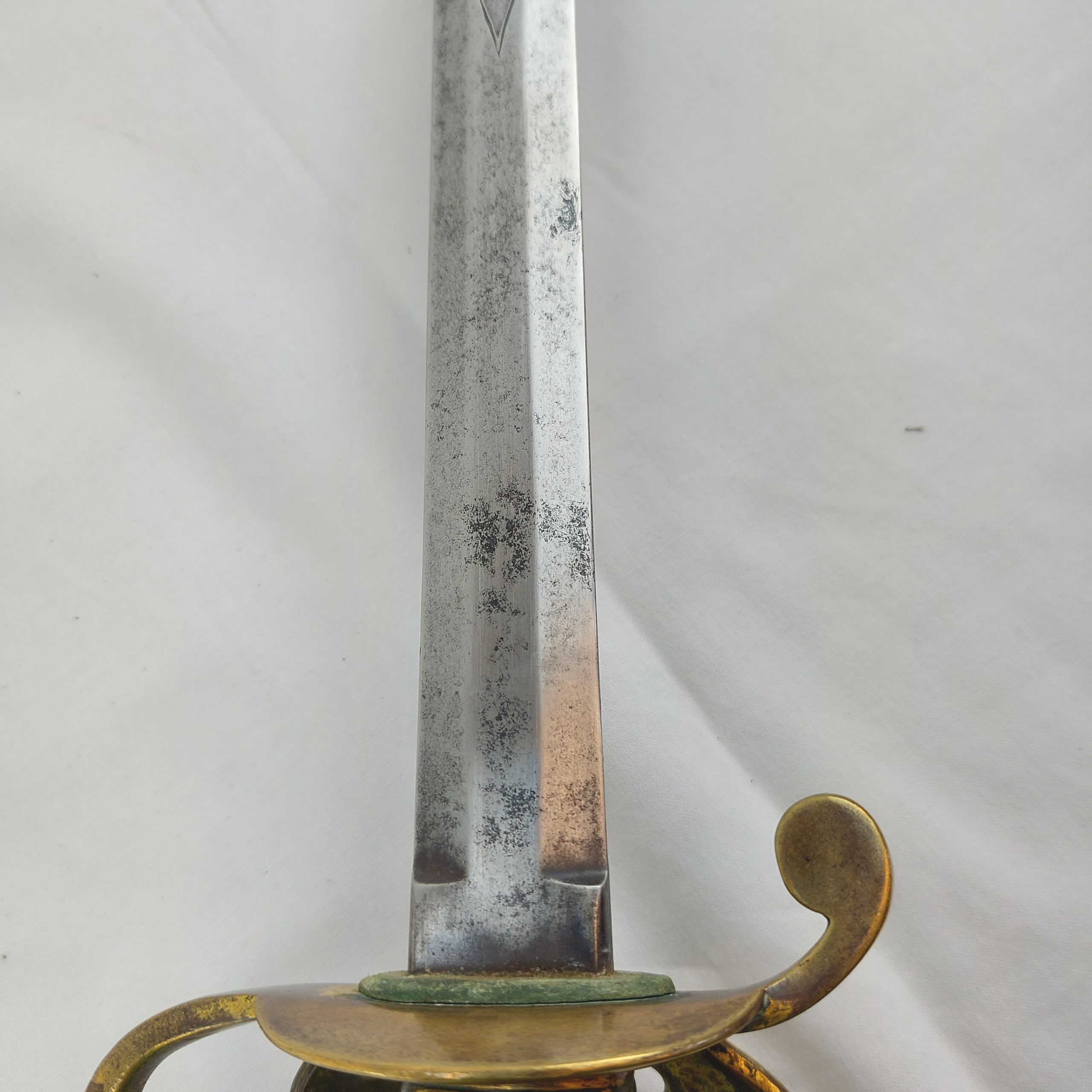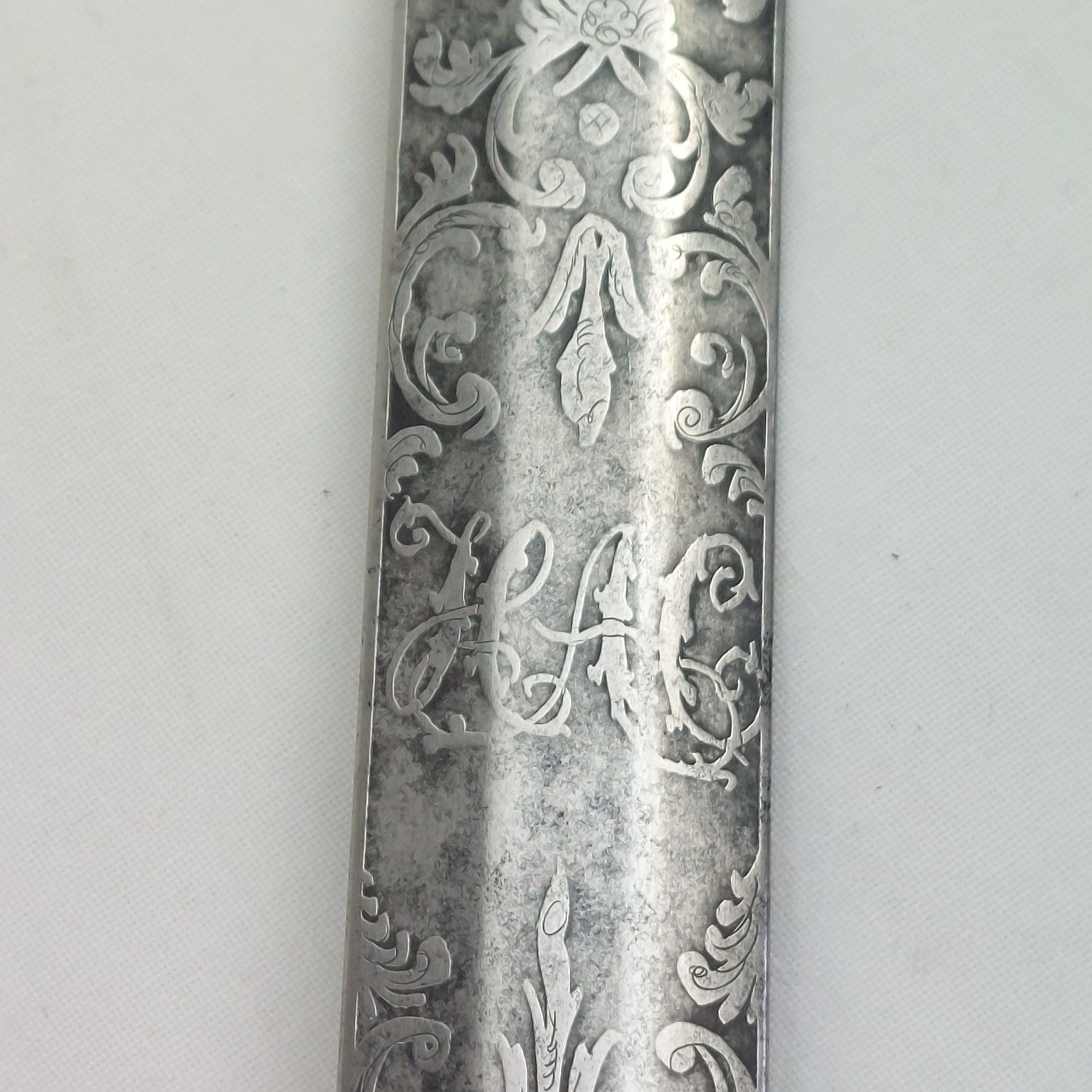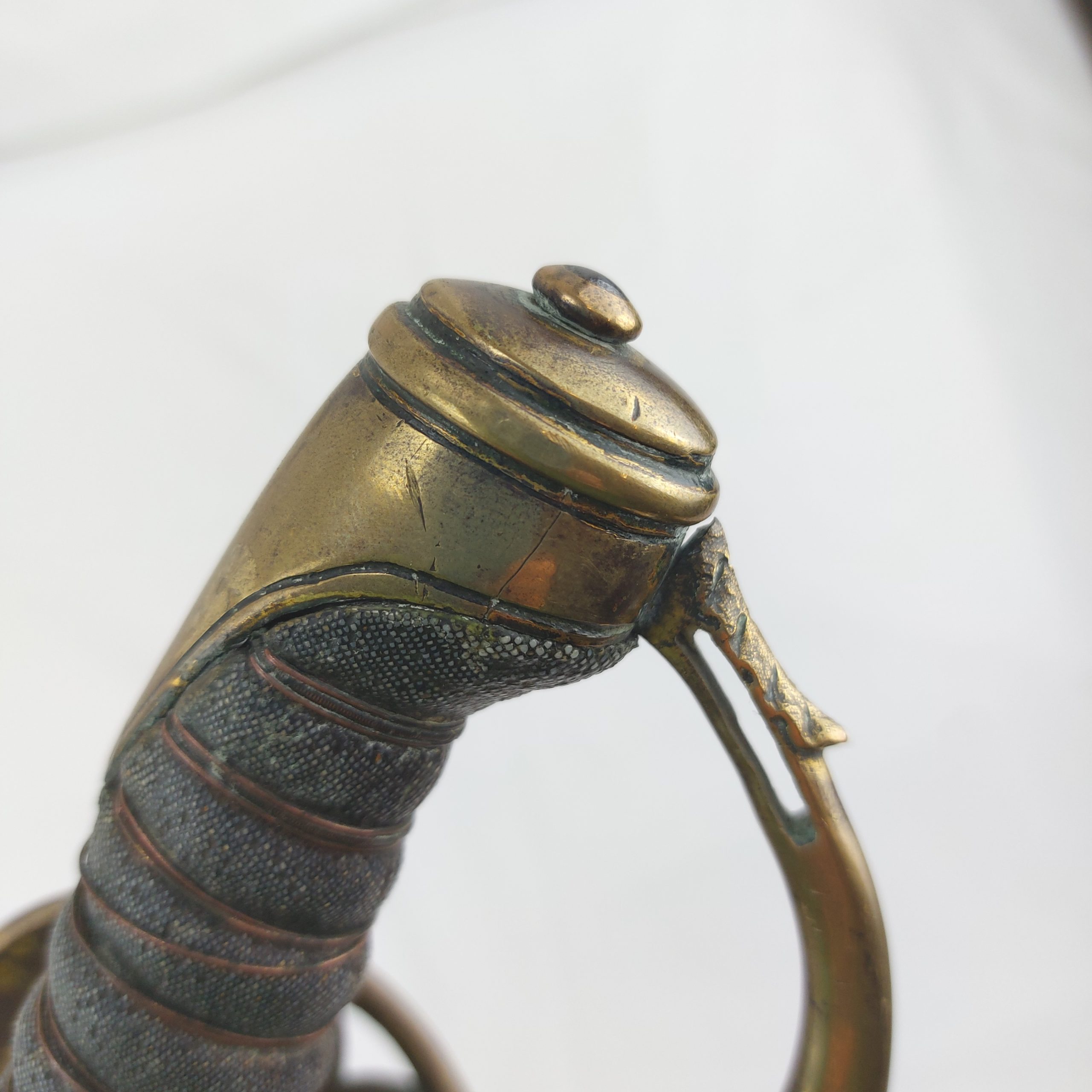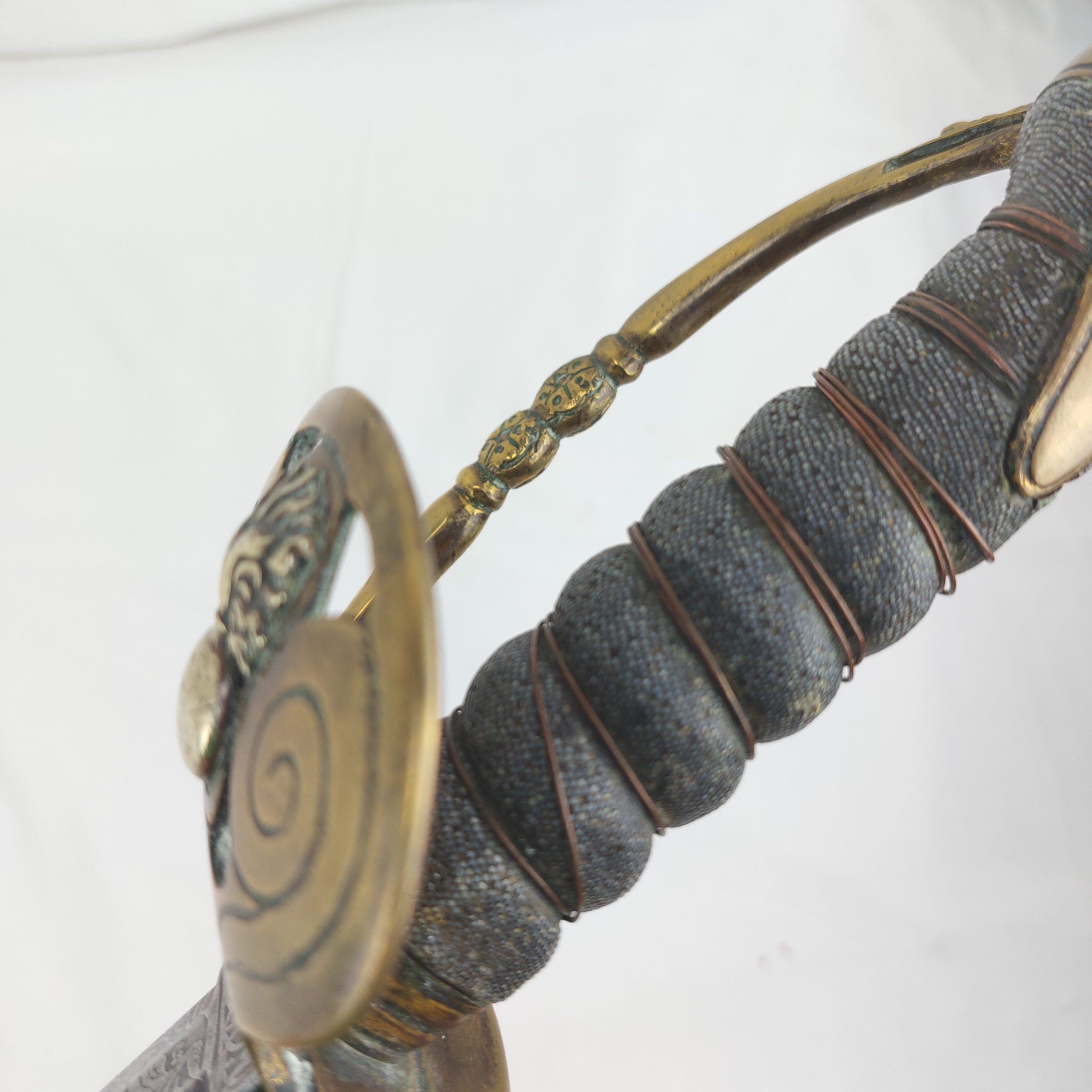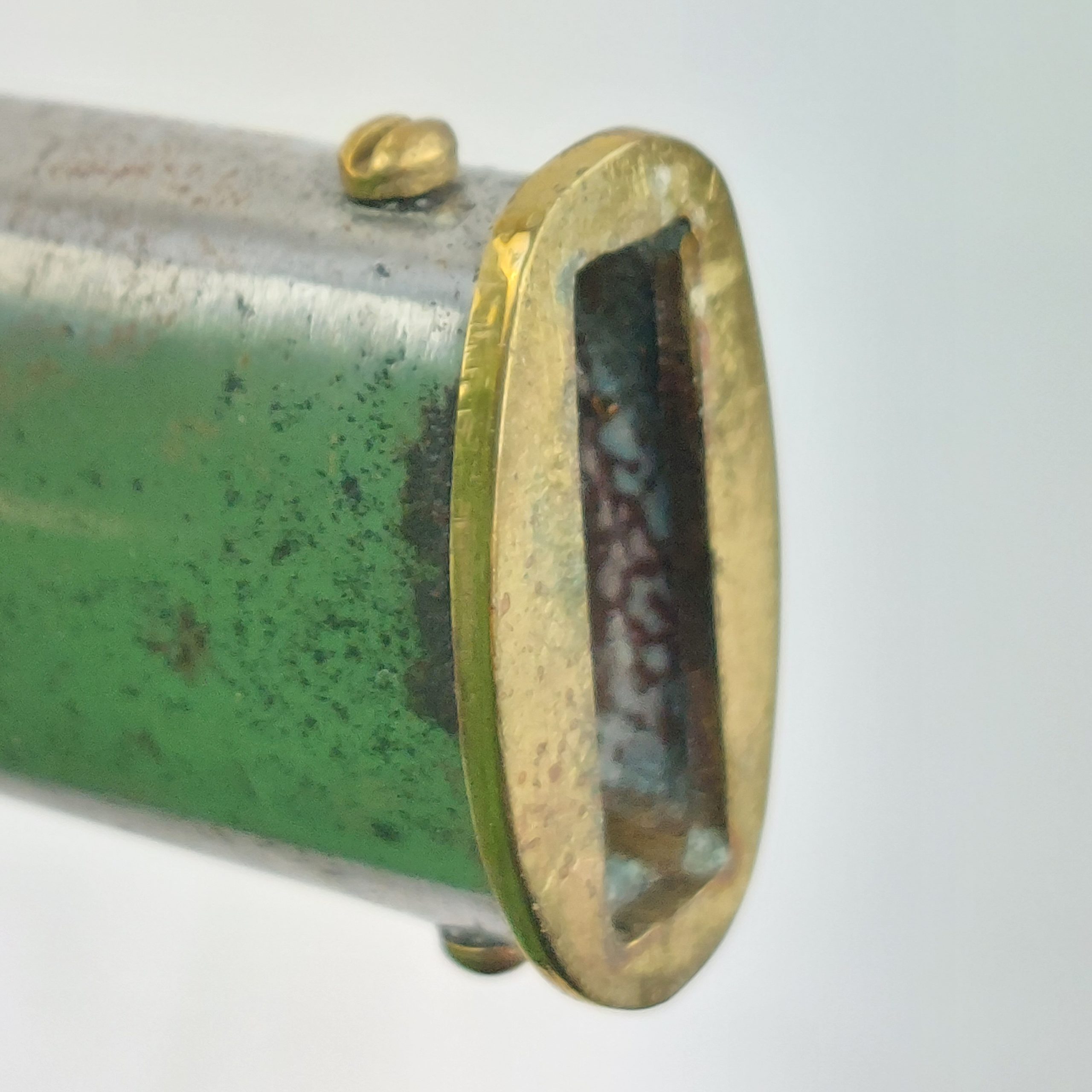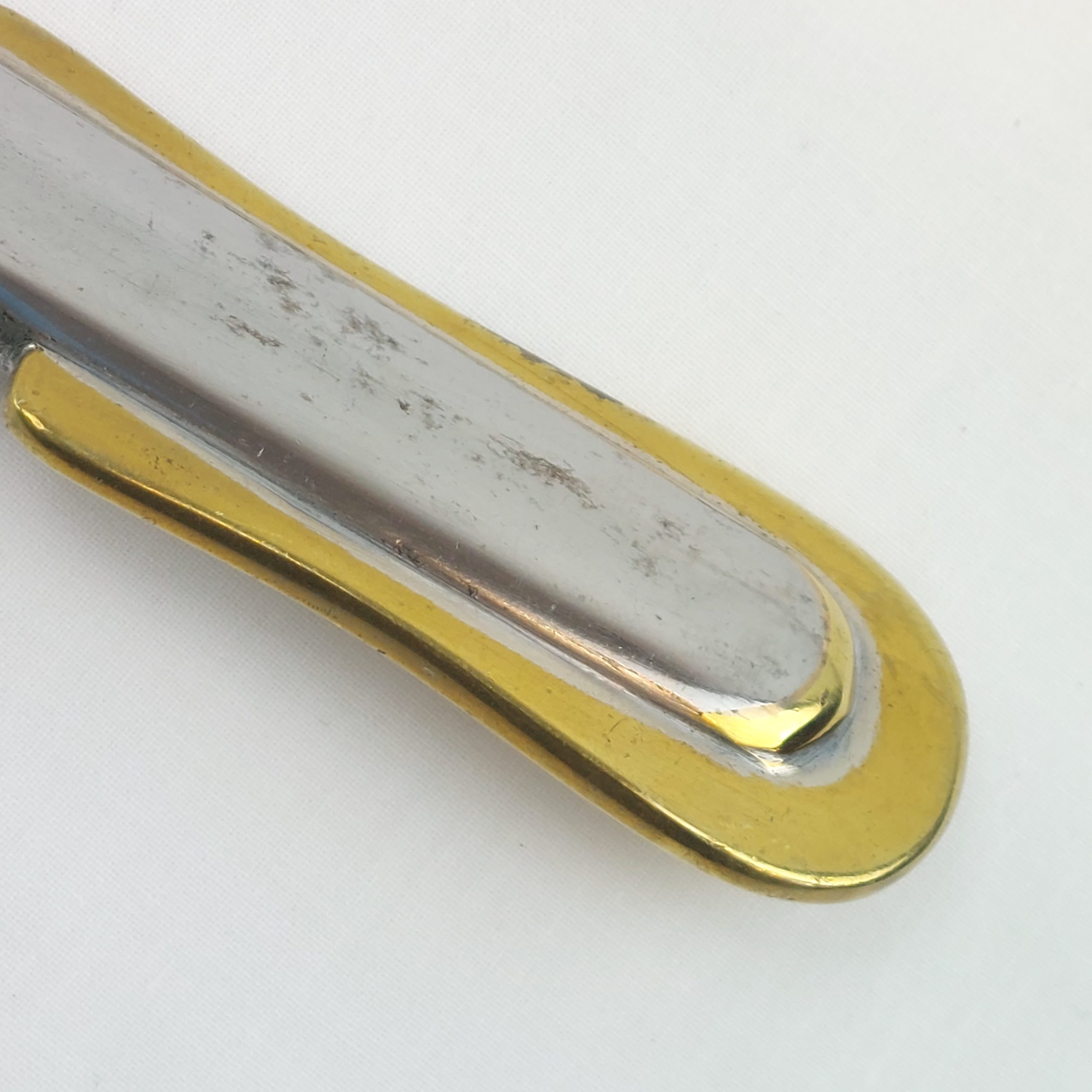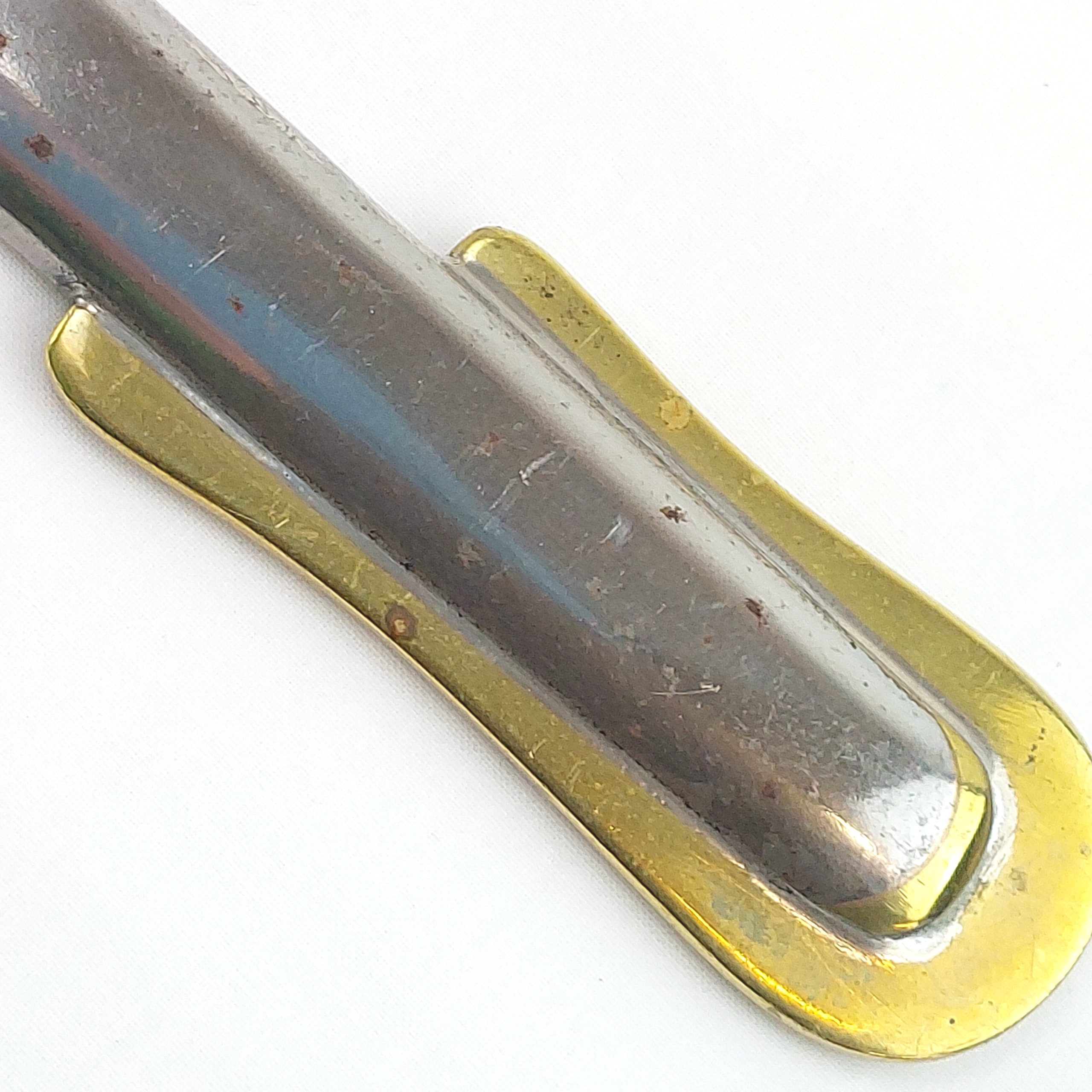*1855 Pattern, Honourable Artillery Company, 19th Century Victorian Officers Sword and Scabbard*
A scarce mid Victorian Honourable Artillery Company Officers (H.A.C) sword, regimentally marked. The 31inch blade engraved with foliate etching, the initials H.A.C. to both sides. Curved scalloped guard displaying a white metal flaming grenade.
The Honourable Artillery Company (HAC) is one of the oldest military organizations in the world, with a history that dates back to the early 16th century. Based in London, the HAC has served as both a ceremonial and an operational unit over the centuries, evolving into an elite regiment of the British Army.
*Condition*
The guard in excellent condition, with a good amount of original finish. Free from major dents or buckling. The shagreen grip in good condition, and retaining its original twist wire binding. Steel dress scabbard generally sound with some minor tarnishing. The sword sheaths and draws well. Please see photographs as part of the condition report.
Here’s an overview of its rich history:
Early Origins (1537)
The Honourable Artillery Company was founded in 1537 during the reign of King Henry VIII, when the monarch granted a charter to the Guild of St George, a society of citizens practicing archery and military drills. The name “artillery” originally referred to all forms of missile weapons, including archery, and not just the use of cannons or firearms.
This guild evolved into the HAC, and over time, it became responsible for training members in the use of firearms and artillery as those weapons became more prominent in warfare.
17th and 18th Centuries: Civil War and Ceremonial Roles
During the English Civil War (1642–1651), the HAC was divided, with members fighting for both the Royalists and the Parliamentarians. However, the company’s role became more ceremonial after the Restoration of the monarchy in 1660, particularly in the defense of London.
In the 18th century, the HAC primarily served as a ceremonial unit and militia for the city of London. They conducted training in the use of artillery and infantry weapons, although their role was more symbolic than operational during much of this period.
Napoleonic Wars and 19th Century
The HAC became more active during the Napoleonic Wars (1803-1815), when the threat of invasion by Napoleon’s forces prompted the company to take on defense roles in London, particularly for guarding against French raids and training militia forces.
In 1860, during the Victorian era, the HAC was reorganized as a volunteer force, and its artillery units were tasked with manning coastal defenses and protecting London from potential foreign threats. The company expanded its artillery expertise and also began training infantry and cavalry.
Boer War (1899–1902)
The Second Boer War in South Africa was the HAC’s first significant overseas deployment in modern times. Volunteers from the HAC joined British forces to fight against the Boers, marking the company’s transition from a ceremonial unit to a combat force. This war demonstrated the importance of artillery and modern warfare tactics, and the HAC played a critical role in artillery operations.
World War I (1914–1918)
The First World War saw the HAC involved in full-scale combat for the first time. The company contributed both infantry and artillery units to the British Army. The HAC infantry battalions fought on the Western Front in key battles, including the Somme and Ypres.
The HAC’s artillery units were equally critical, providing heavy artillery support to British forces. They earned a reputation for being highly effective and disciplined.
By the end of the war, many HAC members had been killed or wounded, but the unit had cemented its reputation as an elite force within the British Army.
World War II (1939–1945)
During World War II, the HAC again provided both artillery and infantry units. It played a major role in anti-aircraft defense in London during the Blitz, protecting the city from German bombing raids. The HAC’s artillery units operated anti-aircraft guns, defending key installations and civilian areas.
Members of the HAC also fought in major campaigns across Europe and the Middle East. Many members served with distinction, and the HAC continued to maintain its high standards of training and operational readiness.
Post-War Period and Modern Role
After World War II, the HAC continued to serve as part of the British Army’s Territorial Army (TA), the reserve force. The regiment maintained a ceremonial role while also contributing to Britain’s reserve defense capability.
In the post-war period, the HAC underwent a number of structural changes and reconfigurations to adapt to the evolving nature of warfare. In addition to its artillery units, the HAC began focusing more on surveillance and reconnaissance. The regiment played a key role during the Cold War, serving in an intelligence and reconnaissance capacity.
Modern Day
Today, the Honourable Artillery Company is a highly trained, operational part of the Army Reserve. Its main roles include surveillance, reconnaissance, and artillery. The HAC also operates a ceremonial troop, responsible for providing guards of honor and gun salutes for state occasions.
The regiment’s modern activities include:
Providing Reserve Forces: The HAC is a key part of the British Army Reserve and contributes trained personnel to support British military operations globally.
Surveillance and Target Acquisition: The HAC’s reconnaissance units specialize in long-range surveillance and intelligence gathering on the battlefield.
Ceremonial Duties: The HAC ceremonial unit provides gun salutes for state events at the Tower of London and Green Park, and serves as the ceremonial bodyguard for the Lord Mayor of London.
The HAC Today
Headquarters: The HAC is headquartered at Armoury House in Finsbury, London. This historic location has been the HAC’s base since the early 17th century and houses both the regiment’s operational and ceremonial units.
Uniform and Traditions: The HAC retains many traditional elements, including ceremonial uniforms and historic practices. The regiment is one of the few units in the British Army that is allowed to march in the City of London with fixed bayonets, a privilege granted to the HAC in recognition of its long service to the city.
Membership: The HAC recruits both full-time soldiers (from the Army Reserve) and part-time volunteers, including those with specific skill sets related to artillery, reconnaissance, and intelligence.
Notable Achievements and Legacy
The HAC holds a unique place in British military history as one of the oldest continuously serving military units in the world. It has seen service in every major conflict involving the British Army from the 17th century onwards, evolving from a medieval-style archery guild to a modern reconnaissance and artillery unit.
The regiment continues to balance its operational and ceremonial roles, maintaining high standards in both areas.
The Honourable Artillery Company is a historically significant unit in British military history, with roots that stretch back nearly 500 years. It has adapted to the changing nature of warfare while preserving its ceremonial traditions, making it a vital part of both the British Army Reserve and London’s civic life. Its contributions in both world wars and numerous other conflicts, combined with its elite training and reconnaissance capabilities, ensure that the HAC remains a respected and active force today.


